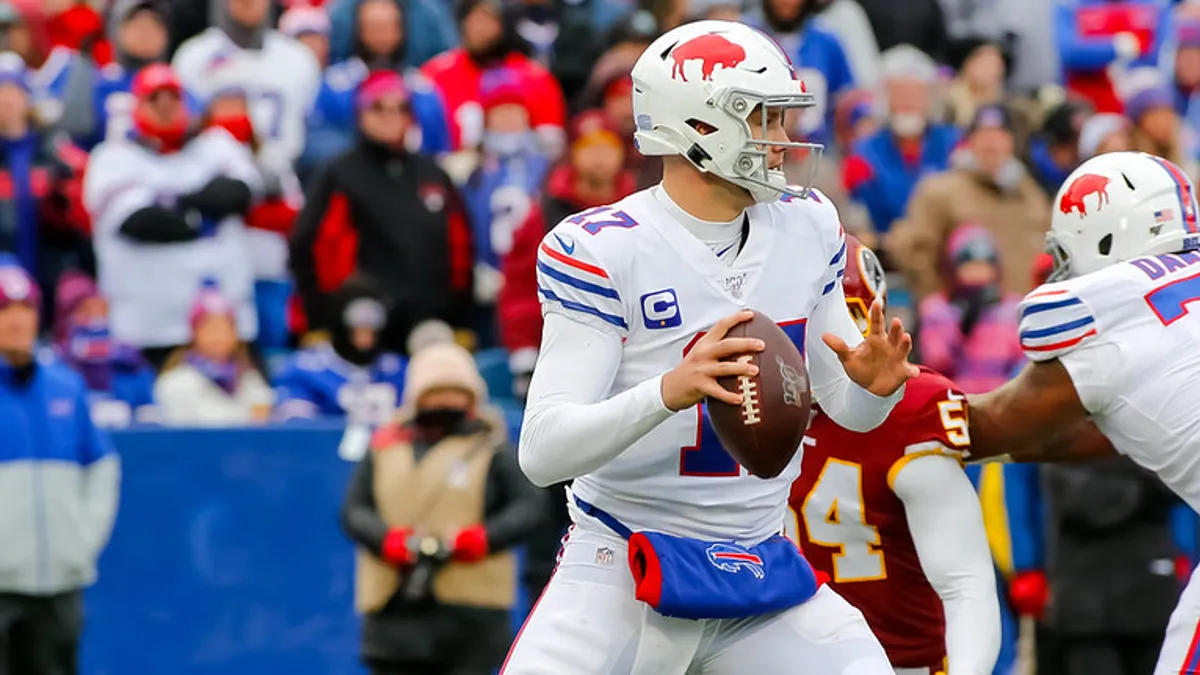The National Football League is expanding its partnership with AWS as the organization pursues generative AI adoption, the two companies said Tuesday.
Just before the preseason kicked off last month, the NFL moved two generative AI projects into production within its media division: Amazon Q Business and a Bedrock-based research tool.
To get ready to introduce generative AI, the organization updated onboarding processes, data approaches and documentation methods. The goal for both projects is to boost employee productivity and improve operational efficiency.
NFL media staff can query internal documentation located in a central database using the Amazon Q Business application.
“We figured that out pretty quickly, and we started to take existing documents and really review them and rewrite them so that the language would be a little more descriptive and create some more connections within a topic,” Brad Boim, senior director of asset management and post production for NFL Media, said. “As soon as we started to write it a little bit differently, it improved the accuracy quite a bit.”
The organization reached its target of 92% accuracy before moving the project into production at the beginning of August, Boim said.
The Bedrock project lets producers query the model to pull up videos that they can package together for broadcast or digital distribution. The videos live in the NFL’s Next Gen Stats database, a proprietary player and ball tracking platform that runs on AWS infrastructure and provides advanced statistics to help contextualize the action on the field.
“You could go to the language model and say, ‘Give me all of Josh Allen’s touchdowns,’ and it’s going to formulate an API call based off the natural language prompt and the API call will hit our Next Gen Stats and bring back a list of plays that match the criteria,” Boim said.
The Bedrock tool is integrated into the workflow and connected to the media asset management system, which contains every camera angle from the game, whether it’s broadcast camera angles, sideline images from social media teams or audio elements from radio coverage.
Employees can use the workflow shortcut to save time when gathering plays. Workers using the tool gathered specific footage around five times faster, Boim said.
“We have a few hundred users with both applications,” Boim said. “We’re just hitting the ground running here at the beginning of the season.”
Employee training, guardrails
The NFL has an 18-week regular season which runs from early September to January. In addition, there are three preseason weeks and four rounds of playoffs.
Preseason begins in August and marks the start of a hiring influx for the league.
“With both projects, the Bedrock and Q, I targeted a deployment at the beginning of August, knowing that we’d start staffing,” Boim said. “I knew that if I had everything deployed into production by the second week of August, then as we onboard every returning or new employee that works for the season, we could put this into it.”
Both projects were deployed about a week before the hiring push started, and around 75 people were onboarded in person, learning how to use the tools and where to get the most benefit.
Through the process, Boim addressed assumptions of AI.
During training, Boim asked how many people were familiar with LLMs or had heard of the technology. Maybe half the room raised their hands, he said.
“That was an eye opener for me that we’re not only changing the way that they’re working because we’re giving them this new tool, we’re also changing the culture of how these folks need to think about conducting business,” Boim said.
As part of onboarding, employees received tips on prompting techniques and best practices. Embedded guardrails help the league promote responsible adoption of the technology.
The Bedrock-based application is not connected to the internet and has an architecture that enforces a narrow use case, refusing requests that land outside its core function. The Q tool also has guardrails to protect integrity.
“If it doesn’t have that information in its database, then it’s going to just not provide the answer because the last thing I want is for it to make up answers,” Boim said.
The Q tool crawls NFL.com daily to resync and pick up information from newly published articles, Boim said, which reduces hallucinations too.
“We stood this up in our test environment and we’re not ready to roll too many of these features into production until we’ve validated them, but I think that was a great functionality that is being used like a front-end search,” Boim said.
As the Amazon partnership continues, the NFL is looking to replicate its Bedrock capabilities to provide more data insights, such as being able to query a model about general knowledge NFL questions.
“We’re just scratching the surface with the Next Gen Stats capability that we added in,” Boim said. “I see so many more ways that we can incorporate more data into the model.”
Correction: This story has been updated to reflect the NFL’s Bedrock-based research tool does not have a name.





















